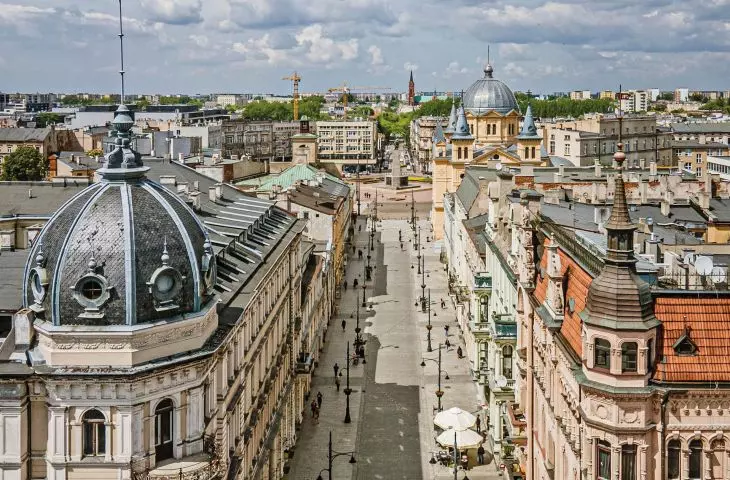By the decision of state institutions, favorable conditions were created here for the construction of factories, and in a broader context - for the conduct of business related to the textile industry. Such was the need of the time. People with skills related to weaving, the first investors, and - in crowds - people looking for work, something that was really in short supply in those days, began to attract to the place. After all, everyday life in these then overpopulated areas was dominated by unemployment, poverty and often hunger. Work was priceless.
All this was happening in an era of great change. The Industrial Revolution was crawling out into the world from England. The first steps were being taken by new technological developments, among which revolutionary machines for the textile industry led the way. They were immediately followed by other innovations, such as the steam engine. The industrial race of civilization began, which quickly involved the major countries of Europe at the time. Both France and Germany (Prussia) and the Habsburg Empire joined the rivalry with England - Czarist Russia had no other choice but to join. Feudal Europe in a century turned into a continent of industry, new technologies and new social orders. The working class emerged, cities began to grow, and the old orders began to totter in the foundations.
Artistically very good murals in Lodz were ubiquitous before it became fashionable in other cities, a trip on their trail is definitely a good idea
© City Hall of Lodz | photo: Paweł Łacheta
In the beginning, the revolution was fueled by small rivers and wood. This gave rise to Lodz and the surrounding industrial settlements, and investments could be made favorably throughout the region. This is how other industrial plants were established in Pabianice, Zgierz, Aleksandrów Łódzki and Konstantynów.
The industrial revolution was rushing at breakneck speed - soon neither wood nor watercourses could fuel the ever-growing machines. The time of the steam engine and energy drawn from coal had arrived. By then, however, a sufficient number of industrial plants had sprung up in and around Lodz. Their specializations, mutual influence, supply chain relationships and worker competence had reached a critical mass that allowed for snowball-like growth. Favorable geographic and legal conditions (tariffs, borders, market demand for apparel products) led to what resembled a gold rush. Textile businesses made fortunes, which attracted more investors and allowed incredible success.
Artistically very good murals in Lodz were ubiquitous before it became fashionable in other cities, a trip along their trail is definitely a good idea
© City Hall of Lodz | photo: Paweł Łacheta
Similar stories happened in the English West Midlands, the area around Manchester, and closer, for example, in Bielsko (Bielitz) or Zyrardow (in those days - one of the largest linen textile factories in Europe). The history of Lodz, however, is unique, as the city has grown into perhaps the largest center of textile industry in the world, certainly one of the largest concentrations of clothing factories on the planet. Lodz's uniqueness is also evidenced by an unbeaten record: well, Lodz is the city with the highest population growth rate in all of Europe. For in a little over a hundred years (between 1815 and 1915) it grew demographically more than six hundred times! This crazy growth was, of course, largely due to the perspective of the initial state, but this does not change the fact that in very many respects Lodz is simply the NAJ. This NAJ is not easy to fully observe and explain. Among other things, it is due to contrasts. Rich palaces vs. poor working-class neighborhoods. Electric streetcars vs. lack of sewage systems. Magnificent architecture vs. seedy, smelly backstreets.
From today's perspective, it's hard to grasp the scale of what was happening in the area two hundred years ago. I described it in part in material on the city of Bielsko-Biala [cf. A&B 02/2022]. The garment industry of the time centered around three types of materials: wool, linen and cotton were key. The aforementioned Bielsko specialized in the former, while Zyrardow specialized in the latter. Cotton became the destiny of Lodz. Outerwear, for cold weather was made of wool; the most expensive. Linen was mainly used to make underwear. Cotton products were the most versatile, bought by virtually the entire population living at the time.
Manufaktura is one of the world's finest shopping and service facilities; the former Israel Poznanski factory is now 27 hectares of everything, including several museums
© City Hall of Lodz








































































